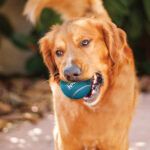
If you’re a dog owner, pet lover, or a first-time pet owner, understanding how to care for a female dog in heat is vital. A dog in heat can experience significant behavior changes and physical symptoms that require special attention. This comprehensive guide will walk you through the key concerns, management strategies, and essential tips to ensure your dog’s comfort and health during her heat cycle.
Understanding the Heat Cycle
What is the Heat Cycle?
The heat cycle, also known as estrus, is the period during which a female dog is fertile and can become pregnant. It typically occurs twice a year and lasts about 2-3 weeks, but this can vary among individual dogs.
Stages of the Heat Cycle
- Proestrus (7-10 days): The initial stage where the dog’s vulva swells, and she may have a bloody discharge. She will attract male dogs but is not yet ready to mate.
- Estrus (5-10 days): This is the mating period. The discharge may become lighter, and the female is receptive to male dogs.
- Diestrus (10-140 days): The period after estrus when the dog is no longer receptive to males. If she is not pregnant, her body returns to normal.
- Anestrus (2-6 months): The resting phase between heat cycles.
Step-by-Step Guide to Caring for a Female Dog in Heat
Step 1: Monitor Behavior Changes
Behavioral Signs: During heat, your dog may exhibit restlessness, increased urination, and excessive licking of the genital area. She might also display nesting behavior or become more affectionate or irritable.
Management Tips:
- Provide extra attention and reassurance.
- Engage her in gentle play and exercise to help manage restlessness.
- Ensure she has a quiet, comfortable space to retreat to if she feels anxious.
Step 2: Prevent Unwanted Pregnancy
Isolation Strategies: To prevent unwanted pregnancy, it’s crucial to keep your dog away from male dogs during her heat cycle. This can be achieved through:
- Indoor Isolation: Keep your dog indoors as much as possible. If you have other pets, separate her from male dogs in the household.
- Supervised Outdoor Time: If you must take her outside, do so on a leash and under close supervision. Avoid dog parks and areas where male dogs are likely to be present.
Emergency Measures: If an accidental mating occurs, consult your veterinarian immediately for advice on next steps.
Step 3: Maintain Hygiene
Hygiene Practices: Maintaining good hygiene is essential to prevent infections and keep your dog comfortable during her heat cycle.
- Clean Bedding: Wash her bedding frequently to remove any discharge and odors.
- Dog Diapers: Consider using dog diapers to manage discharge and maintain cleanliness. Ensure they are changed regularly.
- Gentle Cleaning: Use a damp cloth to clean her genital area daily. Avoid using harsh soaps or chemicals.
Step 4: Understand the Duration and Stages
Tracking the Cycle: Keep a diary or use a mobile app to track the start and end dates of your dog’s heat cycle. This can help you anticipate future cycles and prepare accordingly.
Recognizing Stages: Familiarize yourself with the signs of each stage of the heat cycle. This knowledge will help you provide the appropriate care at each stage.
Step 5: Identify Signs of Complications
Health Monitoring: While most dogs go through their heat cycle without issues, it’s important to watch for signs of complications.
- Excessive Bleeding: If your dog has heavy bleeding or discharge that lasts longer than usual, consult your vet.
- Unusual Discharge: Foul-smelling or greenish discharge could indicate an infection and requires veterinary attention.
- Behavioral Changes: Sudden changes in behavior, such as extreme lethargy or aggression, may signal a problem.
Step 6: Seek Veterinary Care When Necessary
Regular Check-Ups: Regular veterinary check-ups are essential, especially if you’re a first-time pet owner. Your vet can provide personalized advice and ensure your dog’s reproductive health.
Emergency Situations: If you notice any signs of distress, pain, or unusual symptoms, contact your veterinarian promptly. Early intervention can prevent serious health issues.
Additional Tips for First-Time Pet Owners
Educate Yourself
- Research: Read up on the heat cycle and reproductive health of dogs. Knowledge is empowering and will help you make informed decisions.
- Vet Consultations: Don’t hesitate to ask your veterinarian questions. They can provide valuable insights and recommendations tailored to your dog’s needs.
Join a Community
- Online Forums: Join online forums or social media groups for dog owners. Sharing experiences and advice with other pet owners can be incredibly helpful.
- Local Pet Groups: Consider joining local pet groups or clubs. These communities often host events and offer support for new pet owners.
Prepare for Future Heat Cycles
- Spaying Consideration: Spaying your dog can prevent future heat cycles and reduce the risk of certain health issues. Discuss this option with your vet.
- Stock Up on Supplies: Keep a supply of dog diapers, cleaning products, and other essentials on hand for future heat cycles.
Conclusion
Caring for a female dog in heat requires patience, attention, and a good understanding of her needs. By managing her behavior changes, preventing unwanted pregnancy, maintaining hygiene, understanding the heat cycle, and seeking veterinary care when necessary, you can ensure her comfort and well-being.
Remember, each dog is unique, and what works for one may not work for another. Stay attuned to your dog’s specific needs and consult your veterinarian regularly for the best care practices.
If you have any questions or need further advice, don’t hesitate to reach out to your veterinarian or join a community of fellow dog owners. Together, you can ensure that your beloved pet stays happy and healthy through every heat cycle.








